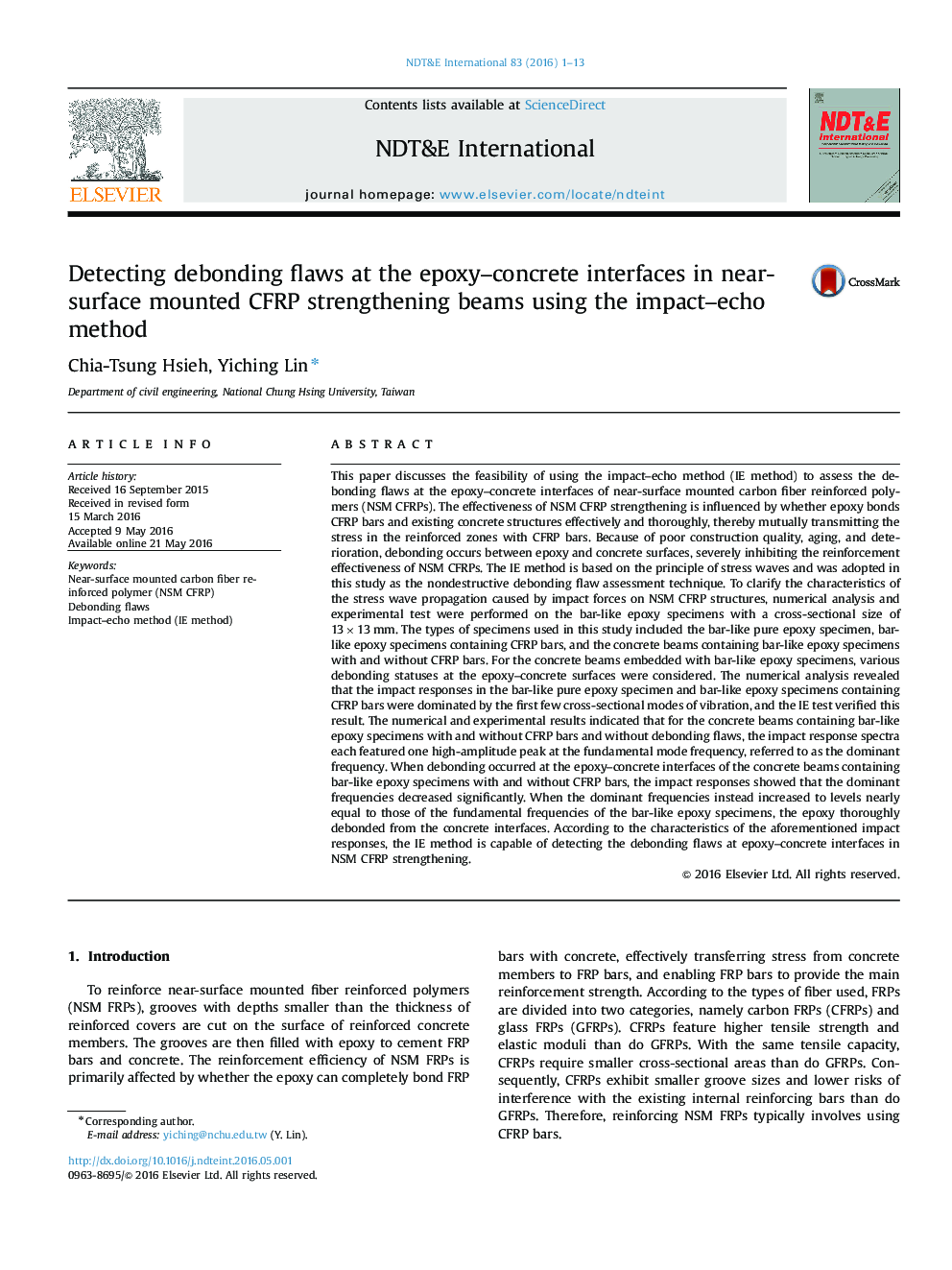| کد مقاله | کد نشریه | سال انتشار | مقاله انگلیسی | نسخه تمام متن |
|---|---|---|---|---|
| 294936 | 511504 | 2016 | 13 صفحه PDF | دانلود رایگان |

This paper discusses the feasibility of using the impact–echo method (IE method) to assess the debonding flaws at the epoxy–concrete interfaces of near-surface mounted carbon fiber reinforced polymers (NSM CFRPs). The effectiveness of NSM CFRP strengthening is influenced by whether epoxy bonds CFRP bars and existing concrete structures effectively and thoroughly, thereby mutually transmitting the stress in the reinforced zones with CFRP bars. Because of poor construction quality, aging, and deterioration, debonding occurs between epoxy and concrete surfaces, severely inhibiting the reinforcement effectiveness of NSM CFRPs. The IE method is based on the principle of stress waves and was adopted in this study as the nondestructive debonding flaw assessment technique. To clarify the characteristics of the stress wave propagation caused by impact forces on NSM CFRP structures, numerical analysis and experimental test were performed on the bar-like epoxy specimens with a cross-sectional size of 13×13 mm. The types of specimens used in this study included the bar-like pure epoxy specimen, bar-like epoxy specimens containing CFRP bars, and the concrete beams containing bar-like epoxy specimens with and without CFRP bars. For the concrete beams embedded with bar-like epoxy specimens, various debonding statuses at the epoxy–concrete surfaces were considered. The numerical analysis revealed that the impact responses in the bar-like pure epoxy specimen and bar-like epoxy specimens containing CFRP bars were dominated by the first few cross-sectional modes of vibration, and the IE test verified this result. The numerical and experimental results indicated that for the concrete beams containing bar-like epoxy specimens with and without CFRP bars and without debonding flaws, the impact response spectra each featured one high-amplitude peak at the fundamental mode frequency, referred to as the dominant frequency. When debonding occurred at the epoxy–concrete interfaces of the concrete beams containing bar-like epoxy specimens with and without CFRP bars, the impact responses showed that the dominant frequencies decreased significantly. When the dominant frequencies instead increased to levels nearly equal to those of the fundamental frequencies of the bar-like epoxy specimens, the epoxy thoroughly debonded from the concrete interfaces. According to the characteristics of the aforementioned impact responses, the IE method is capable of detecting the debonding flaws at epoxy–concrete interfaces in NSM CFRP strengthening.
Journal: NDT & E International - Volume 83, October 2016, Pages 1–13